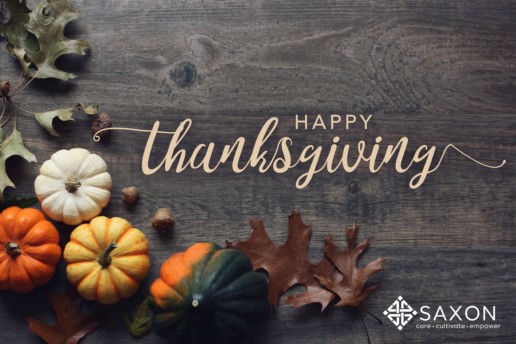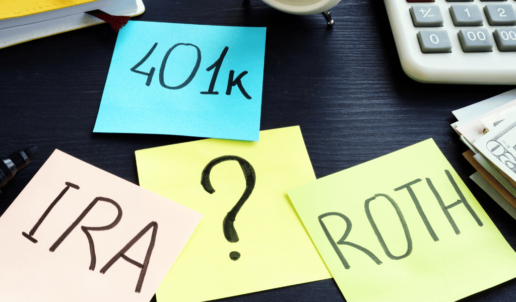Subway’s new program helps workers get degrees
What voluntary benefits does your organization offer? Subway is now offering a program that gives workers access to career readiness and high school diploma programs. Read the following blog post to learn more about this new benefit.
Subway is making it easier for employees to get high school and college degrees.
The sandwich franchise is launching a new education benefit for employees in 331 restaurants in central Florida. The program, which began piloting last month, gives workers access to a career readiness and high school diploma program.
“I think something like this really does bring value and improves the lives of [our] employees,” says Michael Robling, an operations specialist at Subway for North America.
Subway’s program includes a career readiness boot camp and high school degree program offered through Penn Foster. Robling says the company has partnerships with several universities to help employees get college degrees at a discount. The company also offers scholarships for employees through the Frederick A. DeLuca Foundation, a private foundation created by one of Subway's co-founders.
“This is definitely just a start,” Robling says.
This move comes after Mexican-inspired restaurant chain Chipotle began offering free college degrees to its 80,000 employees from 75 business and technology degree programs. Employees at Chipotle can earn their associates or bachelor degrees online from the University of Arizona, Bellevue University, Brandman University, Southern New Hampshire University and Wilmington University.
More than half of employers offer a tuition assistance benefit to employees, according to data from the Society for Human Resource Management. Indeed, companies including Disney, Walmart and Discover, Chick-fil-A, Hulu, Lowe’s, McDonald’s and Taco Bell all also announced education benefits last year.
Robling says he thinks more employers will begin to invest in benefits that help workers achieve higher education goals. Employees at Subway are appreciative of the opportunity and it may help the company retain workers long-term, he adds.
“If the franchise owner is looking out for me, I’m going to be happier at work,” he says. “That’s one of the big positives of this program.”
SOURCE: Hroncich, C. (11 November 2019) "Subway’s new program helps workers get degrees" (Web Blog Post). Retrieved from https://www.benefitnews.com/news/education-assistance-for-college-and-high-school-diplomas
Thanksgiving Pie with the Saxon Family
Happy Holidays! In celebration of the holidays, the Saxon crew has decided to share one of our favorite holiday recipes for this month’s Fresh Brew! We hope you all have a safe and happy Thanksgiving!
Four-Flavor Sheet Pan Pie
Ingredients
Crusts:
- Two 14.1-ounce boxes refrigerated rolled pie crust (4 crusts total)
- All-purpose flour, for dusting
- 1 large egg, lightly beaten
- 1/4 cup turbinado sugar
Apple Pie:
- 2 pounds mixed apples (such as Granny Smith, Gala and McIntosh), peeled, cored and sliced 1/4-inch thick
- 1/4 cup granulated sugar
- 1 tablespoon fresh lemon juice
- 4 tablespoons unsalted butter
- 2 teaspoons all-purpose flour
- 3/4 teaspoon ground cinnamon
- Kosher salt
Sour Cherry Pie:
- 2 cups drained jarred sour cherries, plus 3/4 cup juice from the jar
- 2 tablespoons cornstarch
- 1/4 cup granulated sugar
Pumpkin Pie:
- 1 1/3 cups canned pure pumpkin puree
- 2/3 cup evaporated milk
- 1/2 cup granulated sugar
- 1 teaspoon pumpkin pie spice
- 1 large egg
Pecan Pie:
- 1/2 cup packed light brown sugar
- 1/2 cup light corn syrup
- 4 tablespoons unsalted butter, melted
- 1 teaspoon pure vanilla extract
- 2 large eggs
- Kosher salt
- 3/4 cup roasted pecan halves
Directions
- For the crusts: Preheat the oven to 350 degrees F. Unroll 3 of the pie crusts on a lightly floured work surface. Stack them on top of each other. Roll out the thick, layered dough to a 15-by-21-inch rectangle. Press into a rimmed baking sheet so that the crust comes up the sides and hangs over slightly. This will be the bottom crust. Chill until ready to use, at least 30 minutes.
- Use the remaining crust for the top of the pie. Unroll it on a lightly floured work surface and roll it to a 14-by-18-inch rectangle. Cut the dough in half so you have two 7-by-9-inch pieces. One half will be the top crust for the apple portion of the pie. Cut the other half into 1-inch diagonal strips to use for the lattice on the cherry pie. Place the rectangle and strips on a parchment-lined baking sheet and chill until ready to use.
- For the apple pie: Toss the apples in a medium bowl with the sugar and lemon juice. Melt the butter in a large skillet over medium-high heat, add the apples and cook, stirring occasionally, until tender, about 10 minutes. Stir in the flour, cinnamon and a pinch of salt and cook until thickened, about 1 minute more. Cool completely.
- For the sour cherry pie: Place the cherries in a medium bowl. Whisk 1/4 cup cherry juice with the cornstarch in a small saucepan until completely smooth. Add the remaining cherry juice and sugar and bring to a boil over medium-high heat. Cook, whisking constantly, until thick and glossy, about 30 seconds. Pour the sauce over the cherries and gently fold to combine. Cool completely.
- For the pumpkin pie: Whisk together the pumpkin, evaporated milk, sugar, pumpkin pie spice and the egg and in a medium bowl until smooth. Set aside.
- For the pecan pie: Whisk together the brown sugar, corn syrup, butter, vanilla, eggs and a pinch of salt in a medium bowl until smooth. Fold in the pecans and set aside.
- Once all fillings are made, begin assembling the pie. Remove both baking sheets with dough from the refrigerator.
- Visualize the sheet pan is divided in half lengthwise and then crosswise so you have 4 equal quadrants. Each quadrant will hold a different pie filling. Prick the bottom crust all over with a fork.
- Add the pie fillings in this order: Add the apple pie filling to the upper left quadrant of the crust; spread it to cover a 7-by-9-inch rectangle. Moving counter clockwise, pour the pumpkin filling right under the apple pie filling and spread it the same size as the apple filling. Spread out the cherry filling next to the pumpkin filling. Fill the top right empty space with the pecan filling.
- Cover the apple pie quadrant with the reserved rectangle of dough. Lay the pie strips out diagonally over the cherry pie quadrant. Press any remaining strips of dough around the edge of the pie to thicken the rim. Crimp the edge of the pie, making sure to incorporate and crimp together the dough from the apple quadrant. Brush the edges and the dough on top of the pie with egg and sprinkle with turbinado sugar. Cut decorative slits in the apple pie crust.
- Bake until all pies are set and the crust on the apple pie and cherry pie is golden brown and crisp, 55 minutes to 1 hour 5 minutes.

This recipe was provided by Food Network. If you’d like to visit the original source, please click here.
**Holiday Hours
Our office will be closed Thursday, November 28 and Friday, November 29. We wish you a happy Thanksgiving filled with family, friends and good food!
What will Workplace Wellness Look Like in 2020?
What will 2020 have in store of workplace wellness? Currently, all indicators are pointing toward a rapid evolution of the workplace wellness industry. Read this blog post to learn more about what wellness will look like in 2020.
As we look toward 2020, all indicators point towards a rapid evolution of the U.S. workplace wellness industry characterized by innovative solutions for managing health care costs that serve the increasing need for proactive ownership of well-being. However, are advances in related disciplines being leveraged optimally, cohesively and creatively to provide for maximum benefit to both the employee and employer?
The corporate model of wellness programs ranges from education programs, to a more evolved model of on-site fitness facilities, incentive programs and HR driven wellness initiatives as part of an overall health and benefits offering. The 2014 SHRM Survey of Strategic Benefits - Wellness Initiatives shows that 76 percent of all surveyed companies had some form of wellness programs/resources. Among those companies two-thirds offered some form of incentive or reward program.
The results of these types of programs have already demonstrated the positive impact of a collaborative responsibility partnership between employer and employee in implementing a wellness approach and the reduction of medical costs.
Several key performance indicators have been used for evaluation, including reductions in monthly medical cost spend, hospital admissions and employee absenteeism. According to SHRM, of the 30 percent who conducted a cost analysis of their wellness programs, 93 percent noted their programs were somewhat or very effective in cutting costs.
This certainly demonstrates a return on investment (ROI) to the employer. In addition, the positive qualitative effect on the organizational culture cannot be understated, with direct impact on talent and team spirit as well as other variables that are incremental to the quantitative benefits measured.
This is particularly important given that variables such as an increasingly aging workforce (by 2020, the number of Americans in the 55 to 64 age group will have grown by 73 percent since 2000), an increase in predominant disease states (by 2030, 40.5 percent of the US population is expected to have some form of cardiovascular disease) and rapidly changing regulations added to the equation, employers are evaluating best and "next" practices to determine if these programs are truly optimized to realize their full potential of impact.
For the next iteration of workplace wellness, the lessons learned can be leveraged from the evolution of the traditional health benefit offering to a health exchange model or to the advances and learnings in personalized therapeutic medicine. The current opportunity requires a creative and innovative approach to health and wellness ownership. Coupling a predictive, proactive and fact-based wellness management approach with employee-owned and led wellness decisions can provide a powerful and personalized platform.
By maintaining this initiative in a structured and sustainable manner, employers are able to provide a more targeted approach of spending proactive wellness dollars for maximum ROI and decreasing the reactive spend on medical costs.
These personalized programs will enable companies to better track and monitor costs and ROI with the goal to have more than 30 percent of the companies properly monitoring cost efficiencies. This is further supported by the fact that 90 percent said they would increase their investment in wellness programs if they could quantify the ROI.
Targeted Wellness
Traditional medical treatment has evolved significantly from standard diagnostic evaluations to increased utilization of scientific advances, specifically in terms of personalized medicine. Medical decisions and treatments are tailored to an individual patient through a data-based approach to drive the efficiency and effectiveness of patient treatment.
Similarly, there is an opportunity for the employee - within the framework of privacy regulations - to leverage this fact-based approach to optimize the value derived from a wellness offering. Two-thirds of employers involved in wellness initiatives typically provide some type of defined contribution or incentive towards wellness (e.g., fitness rebate); however, an opportunity exists to focus this spend on the desired health outcomes. This would provide the maximum benefit to the employee from a well-being standpoint, as well as to the employer for its investment.
While the powerful combination of data analytics and segmentation analysis allows a human resources team to facilitate a fact-based decision-making approach to right-fit an organization with the right individual in the right role at the right time, an organization can effectively manage the time and money dedicated to workplace wellness by creating a tailored program based on the individual employee's current needs and critical influencing factors.
Wellness Exchanges
Employers have made the journey from self-funded managed health care to the growing trend of providing employees with a "shopping mall" of health insurance options, and on to formal health exchanges - gradually increasing the patient-centric involvement of employees in managing their own health care choices.
The value drivers for this organizational transition include increased price competition based on the marketplace model as well as cost savings influenced by employers not overbuying health care coverage for their employees. This is exemplified by the vast majority of participants switching to cheaper plans in their first year of choice coverage.
This undertaking by an organization is by no means a small effort, and it requires a good amount of diligence and change management - not only in creating the road map for the transformation journey, but also in properly structuring, executing and sustaining this approach. In a well-planned and structured implementation journey, the return on investment can be well recognized.
Similarly, a workplace wellness exchange can offer a suite of proactive health program choices designed to give the employee the responsibility to make an informed and impactful decision that is tailored to drive specific health outcomes.
A marketplace approach can also drive competitive offerings from wellness solution providers and encourage a spirit of innovative and cost-conscious platform options - further maximizing use of wellness dollars. This model will encourage individuals to leverage their own personal health ecosystem information (e.g., current state baseline, lifestyle, environmental factors and disease state predisposition) to choose a solution that may help reduce reactive health care dollars spent based on disease state prevention and risk factor reduction.
According to SHRM, year-over-year employee participation has remained flat. An innovative and personalized approach could help motivate and boost participation and would also continue to ensure that the individual employee's wellness responsibility is shared in partnership with the employer. This would require an independent review of the process, structure and plan design, specifically as it relates to patient privacy and the impact to the holistic benefits offering.
Regardless of a company's ability to track ROI, an overwhelming majority (72 percent) think their wellness initiatives are very or somewhat effective in reducing health care costs and 78 percent thought they improved the overall physical health of their employees.
As the impact of reactive medical claim costs on employers continues to increase due to a variety of influencers, proactive workplace wellness will likely evolve and become an inherent component of an organization's benefits offering.
This presents an opportunity to leverage recent learnings from other initiatives in the life sciences vertical to create an effective and efficient workplace wellness platform that is data-driven and tailored to the needs of the employee - providing a marketplace for choice and competition, and reinforcing the shared partnership responsibility between the employer and employee.
SOURCE: Pervaaz, V. (Accessed 01 November 2019) "What will Workplace Wellness Look Like in 2020?" (Web Blog Post). Retrieved from https://www.corporatewellnessmagazine.com/article/workplace-wellness-in-2020
IRS updates rules on retirement plan hardship distributions
Recently, the Internal Revenue Service (IRS) finalized updates to the hardship distribution regulations. These new regulations make the requirements more flexible and participant friendly. Read this blog post to learn more about these updated regulations.
Employers who allow for hardship distributions from their 401(k) or 403(b) plans should be aware that the Internal Revenue Service recently finalized updates to the hardship distribution regulations to reflect legislative changes. The new rules make the hardship distribution requirements more flexible and participant-friendly.
Hardship distributions are in-service distributions from 401(k) or 403(b) plans that are available only to participants with an immediate and heavy financial need. Plans are not required to offer hardship distributions. But there are certain requirements if a plan does offer hardship distributions. Generally, a hardship distribution may be made to a participant only if the participant has an immediate and heavy financial need, and the distribution is necessary and not in excess of the amount needed (plus related taxes or penalties) to satisfy that financial need.
An administrator of a 401(k) or 403(b) plan can determine whether a participant satisfies these requirements based on all of the facts and circumstances, or the administrator may rely on certain tests that the IRS has established, called safe harbors.
Over the last fifteen years, Congress has changed the laws that apply to hardship distributions. The new rules align existing IRS regulations with Congress’s legislative changes. Some of the changes are mandatory and some are optional. The new rules make the following changes. The following changes are required.
Elimination of six-month suspension.
Employers may no longer impose a six-month suspension of employee elective deferrals following the receipt of a hardship distribution.
Required certification of financial need.
Employers must now require participants to certify in writing or by other electronic means that they do not have sufficient cash or liquid assets reasonably available, in order to satisfy the financial need and qualify for a hardship distribution.
There were also some optional changes made to hardship distributions.
Removal of the requirement to take a plan loan.
Employers have the option, but are not mandated, to eliminate the requirement that participants take a plan loan before qualifying for a hardship distribution. In order to qualify for a hardship distribution, participants are still required to first take all available distributions from all of the employer’s tax-qualified and nonqualified deferred compensation plans to satisfy the participant’s immediate and heavy financial need. The optional elimination of the plan loan requirement may first apply beginning January 1, 2019.
Expanded safe harbor expenses to qualify for hardship.
The new hardship distribution regulations expand the existing list of pre-approved expenses that are deemed to be an immediate and heavy financial need. Prior to the new regulations, the list included the following expenses:
- Expenses for deductible medical care under Section 213(d) of the Internal Revenue Code;
- Costs related to the purchase of a principal residence;
- Payment of tuition and related expenses for a spouse, child, or dependent;
- Payment of amounts to prevent eviction or foreclosure related to the participant’s principal residence;
- Payments for burial or funeral expenses for a spouse, child, or dependent; and
- Expenses for repair of damage to a principal residence that would qualify for a casualty loss deduction under Section 165 of the Internal Revenue Code.
The new regulations expand this list of permissible expenses by adding a participant’s primary beneficiary under the plan as a person for whom medical, tuition and burial expenses can be incurred. The new regulations also clarify that the immediate and heavy financial need for principal residence repair and casualty loss expenses is not affected by recent changes to Section 165 of the Internal Revenue Code, which allows for a deduction of such expenses only if the principal residence is located in a federally declared disaster zone. Finally, the new regulations add an additional permissible financial need to the list above for expenses incurred due to federally declared disasters.
New contribution sources for hardships.
The law and regulations provide that employers may now elect to allow participants to obtain hardship distributions from safe harbor contributions that employers use to satisfy nondiscrimination requirements, qualified nonelective elective contributions (QNECS), qualified matching contributions (QMACs) and earnings on elective deferral contributions. However, 403(b) plans are not permitted to make hardship distributions from earnings on elective deferrals, and QNECS and QMACs are distributable as hardship distributions only from 403(b) plans not held in a custodial account.
As this list indicates, the new regulations make substantial changes to the hardship distribution rules.
The deadline for adopting this amendment depends on the type of plan the employer maintains and when the employer elects to apply the changes. Plan sponsors should work with their document providers and legal counsel to determine the specific deadlines for making amendments.
SOURCE: Tavares, L. (01 November 2019) "IRS updates rules on retirement plan hardship distributions" (Web Blog Post). Retrieved from https://www.benefitnews.com/opinion/irs-updates-rules-on-401k-403b-plan-hardship-distributions
Strategies for communicating with all five generations in the workforce
Did you know: Thirty-eight percent of Americans work for a boss who is younger than they are. According to the Labor Department and U.S. Census Bureau data, there are more employees over the age of 85 working than ever before. Read this article for strategies for communicating with all five generations in today's workforce.
The age gap in today’s workforce is getting increasingly wide. Just look at the Democratic primary for the nation’s highest office.
With Pete Buttigieg, 37, and Sen. Bernie Sanders, 78, running for president, the age range of the job applicants for the biggest job in the U.S. now spans four decades. There are also more workers over 85 working than ever before, according to Labor Department and U.S. Census Bureau data.
Here’s another fact: Today 38% of Americans work for a boss who is younger than they are, said Lindsey Pollak, author of “Remix: How to Lead and Succeed in the Multigenerational Workplace,” at the Atlantic’s Aging Up conference on Wednesday.
“This is the first time in our country's history that we have five distinct generations in the workplace,” said Pollak, who has spent more than 10 years researching and studying millennials. “They are the largest generation in the workplace. You've heard a lot from millennials today, but all of the rest of us are here too.”
“To succeed in this environment, however you approach it, you have to think about all of those generations,” she said.
How can employers win the war on talent with such a diverse age range in the modern workforce? Pollak uses the example of a music remix to frame various engagement strategies — an idea she got based on her interview of a DJ. For example, playing a remix of a classic song at a party could entice both the younger and older generations to get on the dance floor, she said.
“[The DJ] said the trick is to play a remix because the older people at the party recognize the classic and say I know that song. And they come and dance,” Pollak said. “The younger people recognize the remix… and they come and dance. So the solution to a five-generation workplace is not either-or. We did it the millennial way or we do it the boomer way. It's always about, how can we bring everybody together?“
Pollak offered three examples of how employers can appeal to multiple generations. The first centers on recruitment. Employers should recruit from across generations. One example was a solution by a pool and beach club in Galveston, Texas, which began recruiting older workers after they experienced a downturn in teenage applicants, she said.
“[The beach club] looked around and said, who really comes and swims here every day? It's the people over 50 who want a low-impact exercise,” she said. “And so they started putting up posters saying, do you want to turn your passion into a career?”
The idea worked. Lifeguard staff became people over 55 including one 83-year-old lifeguard, Pollak said.
A second strategy involves communication, she said. Asking employees about their preferred communication style is one key way to ease multigenerational differences.
“The simple [strategy] here is to not look for the one way that everybody wants to communicate. There isn't one. It depends on your personality. It depends on the work that you do. It depends on your personal preferences,” she said.
The solution is to simply get in the habit of asking everyone at work how they prefer to communicate. Asking employees their communication style of preference — whether that be over text, a phone call or social media — can help improve communication.
Employers should look for mentoring opportunities, along with reverse mentoring experiences, where younger workers can help guide older workers on new skills, she said.
“Mentoring is an example of a classic practice that should never go out of style. There is nothing old fashioned or outdated about mentoring,” she said.
Mentoring also goes in both directions. Junior staff may be more proficient using various apps, for instance, and be good candidates to train other colleagues. To have a successful multi-generational workforce, employers should consider input from employees in a variety of age groups.
“Think of yourself as having a multigenerational board of advisers,” Pollak said. “What if you had a person from each generation who was advising you on how to look at the world and how to think about your job and your career?”
SOURCE: Siew, W. (31 October 2019) "Strategies for communicating with all five generations in the workforce" (Web Blog Post). Retrieved from https://www.benefitnews.com/news/strategies-for-communicating-with-all-five-generations-in-the-workforce
Consider these 4 strategies to boost employee engagement
One way HR departments can boost employee engagement is by developing a holistic employee benefits package. Making sure your benefits plan suits a diverse multi-generational staff is essential to keeping employees engaged. Read this blog post for four strategies to help boost employee engagement.
The foundation of any high-performing culture is always a strategic compensation and benefits package. Employee engagement at any company requires the involvement of the HR department — and one way HR teams can boost engagement is by developing a holistic benefits package.
Creating a benefits plan that suits a diverse multi-generational staff is key to keeping staff engaged at every age and in every department. What were once non-traditional benefits are now becoming mainstream. For example, offering student loan repayment plans instead of 401(k) incentives to motivate younger staff, or voluntary benefit choices for employees with specific health issues.
See Also: 5 reasons employers should offer student loan repayment benefits
Even the way an office is ergonomically designed can benefit employees. Adding a walking treadmill or offering a standing desk option helps foster productive work, which directly leads to greater employee satisfaction.
This is a complex equation, and getting it right is challenging. We have hard, candid conversations with employers surrounding what enjoyable, relevant work means. From there, we can establish the purpose behind engagement, creating goals and strategies that offer recognition, growth and the opportunity to voice ideas.
Employees want holistic support for their overall health and wellbeing. Employers are expanding their view of employee benefits to include many more aspects of health and wellbeing — from work environment, convenience services and onsite facilities, to attendance and leave policies, flexible work arrangements and organizational discounts.
See Also: ‘Lifestyle’ choice: An emerging benefit could attract and retain employees
What do employers gain from these benefits? A healthy, adaptable and engaged workforce prepared for the future of work and ready to drive business success.
What we know works
The key to engaging employees with benefits is to apply a strategic design thinking methodology, a planning method that starts with an understanding of an organization’s specific needs.
One size fits one, not all. In the past, efforts were made to make one program work for everyone, but every staff member in the workforce now expects answers for their individual needs, concerns and health risks. Offering flexible benefits or voluntary coverage is a powerful tool — and can help employers gain a productivity boost with a healthier, more engaged workforce.
Align benefits with the whole person. Benefits should align with all aspects of employees’ lives in order to truly support health, wellbeing and work-life balance. This includes the social systems they are part of, their passions, their work habits and personal life events. Nutrition advice, health literacy training and support for personal interests are all possibilities for boosting engagement, physical and emotional health and wellbeing.
See Also: Do I Still Need Life Insurance Once I Retire? Your Questions Answered
Look at the data. Organizations have access to more health data than ever before — and technology makes it easier to analyze — but few employers are fully leveraging this information to design benefits that engage their employees. By analyzing and correlating demographic, health and employee-provided data from varied sources employers can identify which benefit programs workers truly value — and which deliver value.
Use both new and traditional channels to communicate. Organizations must actively market benefits to employees using engaging, relevant and timely communications. Companies can also communicate through technology.
When staff have access to benefits that best support their individual health and wellbeing, organizations will benefit.
SOURCE: Rider, S. (30 October 2019) "Consider these 4 strategies to boost employee engagement" (Web Blog Post). Retrieved from https://www.benefitnews.com/opinion/4-strategies-to-boost-employee-engagement-with-benefits
Strategies to promote emotional well-being in the workplace
According to the National Alliance on Mental Health, one in five adults experiences some form of mental illness during the year. Research has shown that 90 percent of employees perform better when they address mental health. Read the following article to learn more about how to promote emotional well-being at work.
Employers are taking a greater interest in their employees’ well-being by promoting emotional wellness at work.
Wellness programs are offered by 58% of employers, according to data from the Society for Human Resource Management. There are mutual benefits to be reaped by the employer and employees when an organization looks to support its workers’ emotional wellness.
About 90% of employees perform better when they address mental health, but only 41% feel comfortable bringing it up during a check-in, according to data from 15Five, a software company that specializes in gathering employee feedback.
One in five American adults experiences some form of mental illness in any given year, according to the National Alliance on Mental Health. Additionally, one in every 25 adults is living with a serious mental health condition such as schizophrenia, bipolar disorder or long-term recurrent major depression.
Employees are demanding better mental health benefits from their employers and some of them are listening. In September, coffee giant Starbucks announced that it is taking steps to improve its employees’ mental health with a new long-term initiative that includes an enhanced employee assistance program and mental health training for store managers.
Only 25% of U.S.-based managers, across a variety of industries, have been trained to refer employees to mental health resources, according to SHRM. Employers including PNC and Ocean Spray are also investing in benefits to address mental health.
See Also: 5 reasons employers should offer student loan repayment benefits
By investing in emotional and mental wellness benefits, employers are creating a human-centric workforce that drives retention, productivity and engagement, says Heidi Collins, vice president of people operations at 15Five. A key part in achieving this to create a culture that normalizes conversations about mental health.
Collins spoke with Employee Benefit News about how organizations can provide management with stronger training and more open check-ins that enable them to build trusting relationships with their employees to promote productivity.
How is 15Five creating a culture that is more understanding of employees’ mental health needs?
In so many different practices with our employees, both in our manager and direct report programs, but also as a company as a whole. We are normalizing emotions and emotional wellness in the workplace. What it all has, to begin with, is the strategy behind it and your company’s values. It can’t just be a program that HR is sponsoring and promoting but that’s not really attached to the overall company values.
How can an employer create a more mental-health and wellness-focused workplace?
We do automated weekly check-ins between managers and their direct reports. We have a recognition feature called High5, so that people throughout the organization can highlight their peers, express gratitude and also highlight someone for how they may have impacted their day or a project that went really well. There’s a recognition feature, there’s a review feature, there’s a weekly check-in feature. In the weekly check in we have a poll rating and every week we ask our employees: on a scale of one to five, how did you feel at work this week? So we build into our product the practice of managers checking in with their employees about their feelings and about their emotional and mental well-being. We attempt to create enough psychological safety, trust and openness to vulnerability that employees feel comfortable that if they are having a two out of five weeks, it can be okay to share that with a manager and be able to back it up with the reason why. So for example, an employee might say: This week was a two out of five for me because three projects blew up in our faces and at home my kid is sick and I didn’t get any sleep. The employee can just lay it all out there.
How can employers and employees become more comfortable normalizing the conversation around mental health?
It has to be very intentional, deliberate and explicit. It’s the kind of stuff employers may talk about or advertise or promote on their employer branding website...it should be very clear that promoting emotional well-being and mental wellness is part of the employer’s culture and something they value. The executive team and all of the leadership needs to be totally brought into that and that’s challenging because there are many people out there in the world who aren’t comfortable yet with talking about or bringing up those kinds of things at work. That’s the big challenge we’re facing right now, yet so many employees are coming to expect [support for mental health issues].
See Also: Employers can help employees catch some Z's with new wellness benefit
Is there a generational disconnect when it comes to promoting emotional wellness in the workplace?
I would say that those of us who don’t have our heads stuck in the sand, we get it. We realize that there’s a reason this mindset of addressing employees’ mental health is so popular. It’s because it’s way more effective. This is how we want to work. I’m generation X and I have a lot of friends who work in big corporate environments who still think you leave your emotions at the door. But I would say those of us who want to have a more progressive approach are so on board with it. HR professionals and potential employees who follow those old school ways, they won’t even get hired at a company like ours and I bet a lot of our customer’s companies. That’s because we know that doesn’t work anymore.
What specifically has 15Five done to promote this initiative among its employees?
It all starts from our hiring process and what we communicate about our values and what it’s like to work at 15Five. Not only are we assessing candidates on their skills, but we’re also assessing them on their willingness to go to that very vulnerable place in their day to day with their manager or direct report. We have question in our interviews that ask “would you be comfortable talking about emotions at work?” and “if you were a two out of five on the emotion poll for the week, would you be able to share that with your manager and how would you go about doing that?” We will ask questions to make sure candidates we are bringing in are okay with this way of doing things. If somebody is going into a manager position internally, we have just implemented a manager assessment interview to make sure this person really has the skills to be a 15Five manager. A manager in our eyes is not just a taskmaster or somebody who approves your time off. They need to be employees’ coach, cheerleader and champion and they need to be comfortable supporting employees when things aren’t going well. It’s almost like having the skill set of a therapist.
SOURCE: Shiavo, A. (23 October 2019) "Strategies to promote emotional well-being in the workplace" (Web Blog Post). Retrieved from https://www.benefitnews.com/news/strategies-to-promote-emotional-well-being-in-the-workplace
How to Find an Old 401(k) — and What to Do With It
According to the U.S. Government Accountability Office, there are more than 25 million people with money left behind in a previous employer-sponsored retirement plan. Read this blog post from NerdWallet for information on how to find an old retirement plan and what to do with it.
There are billions of dollars sitting unclaimed in ghosted workplace retirement plans. And some of it might be yours if you’ve ever left a job and forgotten to take your vested retirement savings with you.
It happens. A lot.
The U.S. Government Accountability Office reports that from 2004 through 2013, more than 25 million people with money in an employer-sponsored retirement plan like a 401(k) left at least one account behind after their last day on the job.
But no matter how long the cobwebs have been forming on your old 401(k), that money is still yours. All you have to do is find it.
Following the money
Employers will try to track down a departed employee who left money behind in an old 401(k), but their efforts are only as good as the information they have on file. Beyond providing 30 to 60 days notice of their intentions, there are no laws that say how hard they have to look or for how long.
If it’s been a while since you’ve heard from your former company, or if you’ve moved or misplaced the notices they sent, there are three main places your money could be:
- Right where you left it, in the old account set up by your employer.
- In a new account set up by the 401(k) plan administrator.
- In the hands of your state’s unclaimed property division.
Here’s how to start your search:
Contact your old employer
Start with your former company’s human resources department or find an old 401(k) account statement and contact the plan administrator, the financial firm that held the account and sent you updates.
"You may be allowed to leave your money in your old plan, but you might not want to."
If there was more than $5,000 in your retirement account when you left, there’s a good chance that your money is still in your workplace account. You may be allowed to leave it there for as long as you like until you’re age 70½, when the IRS requires you to start taking distributions, but you might not want to. Here’s how to decide whether to keep your money in an old 401(k).
Plan administrators have more leeway with abandoned amounts up to $5,000. If the balance is $1,000 or less, they can simply cut a check for the total and send it to your last known address, leaving you to deal with any tax consequences. For amounts more than $1,000 up to $5,000, they’re allowed to move funds into an individual retirement account without your consent. These specialty IRAs are set up at a financial institution that has been federally authorized to manage the account.
The good news if a new IRA was opened for the rollover: Your money retains its tax-protected status. The bad: You have to find the new trustee.
Look up your money’s new address
If the old plan administrator cannot tell you where your 401(k) funds went, there are several databases that can assist:
- A good place to start is with the Department of Labor’s abandoned plan database.
- FreeErisa also maintains a rundown of employee benefit plan paperwork.
- If you were covered under a traditional pension plan that was disbanded, search the U.S. Pension Guaranty Corp. database of unclaimed pensions.
- There’s also the National Registry of Unclaimed Retirement Benefits, which works like a “missed connections” service whereby companies register with the site to help facilitate a reunion between ex-employees and their retirement money. Not every company is registered with this site, so if none of these searches yields results, move on to the next step.
Search unclaimed property databases
If a company terminates its retirement plan, it has more options on what it’s allowed to do with the unclaimed money, no matter what the account balance.
"If your account was cashed out, you may owe the IRS."
It might be rolled into an IRA set up on your behalf, deposited at a bank or left with the state’s unclaimed property fund. Hit up missingmoney.com, run in part by the National Association of Unclaimed Property Administrators, to do a multistate search of state unclaimed property divisions.
Note that if a plan administrator cashed out and transferred your money to a bank account or the state, a portion of your savings may have been withheld to pay the IRS. That’s because this kind of transfer is considered a distribution (aka cashing out) and is subject to income taxes and penalties. Some 401(k) plan administrators withhold a portion of the balance to cover any potential taxes and send you and the IRS tax form 1099-R to report the income. Others don’t, which could leave you with a surprise IRS IOU to pay.
What to do with it
You might be able to leave your old 401(k) money where it is if it’s in your former employer’s plan. One reason to do so is if you have access to certain mutual funds that charge lower management fees available to institutional clients — like 401(k) plans — that aren’t available to individual investors. But you’re not allowed to contribute to the plan anymore since you no longer work there.
Reasons to move your money to an IRA or to roll it into a current employer’s plan include access to a broader range of investments, such as individual stocks and a wider selection of mutual funds, and more control over account fees.
If your money was moved into an IRA on your behalf, you don’t have to — and probably shouldn’t — leave it there. The GAO study of forced-transfer IRAs found that annual fees (up to $115) and low investment returns (0.01% to 2.05% in conservative investments dictated by the Department of Labor regulations) “can steadily decrease a comparatively small stagnant balance.”
Once you find your money, it’s easy to switch brokers and move your investments into a new IRA of your choosing without triggering any taxes.
Unless you enjoyed this little treasure hunt, the next time you switch jobs, take your retirement loot with you.
SOURCE: Yochim, D. (27 February 2019) "How to Find an Old 401(k) — and What to Do With It" (Web Blog Post). Retrieved from https://www.nerdwallet.com/blog/investing/how-to-find-an-old-401k-and-what-to-do-with-it/
DOL proposes rule on digital 401(k) disclosures
A new rule has been proposed by the Department of Labor (DOL) that is meant to encourage employers to issue retirement plan disclosures electronically. This rule would allow plan sponsors of 401(k)s and other defined-contribution plans to default participants with a valid email address to receive plan disclosures electronically. Read the following blog post to learn more.
The Department of Labor proposed a rule Tuesday that's meant to encourage more employers to issue retirement plan disclosures electronically to plan participants.
The rule would allow sponsors of 401(k)s and other defined-contribution plans to default participants with valid email addresses into receiving all their retirement plan disclosures — such as fee disclosure statements and summary plan descriptions — digitally instead of on paper, as has been the traditional route.
Participants can opt-out of e-delivery if they prefer paper notices. The proposed rule covers the roughly 700,000 retirement plans subject to the Employee Retirement Income Security Act of 1974.
"DOL rules have largely relied on a paper default," said Will Hansen, chief government affairs officer for the American Retirement Association. "Everything had to be paper, unless they opted into electronic default. This rule is changing the current standing."
Proponents of digital delivery believe it will save employers money and increase participants' retirement savings. The DOL also believes digital delivery will increase the effectiveness of the disclosures.
Plan sponsors are responsible for the costs associated with furnishing participant notices, and many small and large plans pass those costs on to plan participants, Mr. Hansen said. The DOL estimates its proposal will save retirement plans $2.4 billion over the next 10 years through the reduction of materials, printing and mailing costs for paper disclosures.
Opponents of digital delivery maintain that paper delivery should remain the default option. They have noted that participants are more likely to receive and open disclosures if they come by mail, and claim that print is a more readable medium for financial disclosures that helps participants better retain the information.
"We are reviewing the proposal carefully and look forward to providing comments to the Department of Labor, but we already know that in a world of information overload, many people prefer to get important financial information delivered on paper, not electronically," said Cristina Martin Firvida, vice president of financial security and consumer affairs at AARP. "The reality is missed emails, misplaced passwords and difficulties reading complex information on a screen mean that most people do not visit their retirement plan website on a regular basis."
President Donald J. Trump issued an executive order on August 2018 calling on the federal government to strengthen U.S. retirement security. In that order, Mr. Trump directed the Labor secretary to examine how the agency could improve the effectiveness of plan notices and disclosures and reduce their cost.
The DOL proposal, called Default Electronic Disclosure by Employee Pension Benefit Plans under ERISA, is structured as a safe harbor, which offers legal protections to employers that follow the guidelines laid out in the rule.
Retirement plans would satisfy their obligation by making the disclosure information available online and sending participants and beneficiaries a notice of internet availability of the disclosures. That notice must be sent each time a plan disclosure is posted to the website.
A digital default can't occur without first notifying participants by paper that disclosures will be sent electronically to the participant's email address.
The 30-day comment period on the proposal starts Wednesday. In addition, the DOL issued a request for information on other measures it could take to improve the effectiveness of ERISA disclosures.
SOURCE: Lacurci, G. (22 October 2019) "DOL proposes rule on digital 401(k) disclosures" (Web Blog Post). Retrieved from https://www.investmentnews.com/article/20191022/FREE/191029985/dol-proposes-rule-on-digital-401-k-disclosures
‘Lifestyle’ choice: An emerging benefit could attract and retain employees
An emerging perk, lifestyle spending accounts (LSA), are one way employers can stay competitive. An LSA is an account that is funded solely by an employer. Employees can use the funds to purchase goods or services as long as they fall into specific categories set by the employer. Read this blog post to learn more about this emerging benefit.
Employers seeking new ways to stay competitive in the employee benefits marketplace might consider an emerging perk, lifestyle spending accounts, whose aim is to broaden employee access range of health and happiness-oriented goods and services.
There’s really no limit to the types of things LSAs can fund, but that endless range of choices can make it difficult for employers to get started.
But first, the basics: An LSA account is funded solely by the employer (and which is taxable as income to employees. The employee can use the funds to purchase goods or services, as long as they fall into the categories of the employer’s choosing. Think investments in physical and mental well-being, environmentally friendly goods or childcare.
The accounts are popular on the West Coast and in Canada. and is gaining traction throughout other parts of the U.S.
Employers can choose to fund a wide range of options, depending on what they think will appeal most to their workforce. For instance, while some carriers reimburse employees for gym memberships, employers can supplement a healthy physical lifestyle by adding workout studios to the options menu; personal or small-group training; workout equipment such as weights, a stationary bike or a treadmill; workout clothes; or nutrition counseling.
And while mental well-being is a new benefits focus of many employers, health plans typically only cover a limited number of counseling sessions. Employers can supplement this benefit by providing funds for therapy or counseling sessions.
Some employers are also using LSAs to help employees with child-related expenses, starting at the very beginning with help with fertility treatments, progressing to doulas and midwives and on to baby gear and then childcare.
But back to the too-much-choice dilemma. To figure out what to fund, start by identifying gaps in your current benefit offering. For example, offering funds toward gym and studio memberships is an obvious place to start if you don’t already have a program in place. Consider what types of employees you want to recruit and retain, and think about what sort of behaviors you want to influence. LSAs can be offered to an entire workforce, or different fund amounts can be offered to different classes of employees.
Other issues to consider: how will you deliver the funds and what happens when an employee leaves or is terminated. These are minor details, but they could leave you with headaches if you don’t address them prior to rollout.
LSAs are typically managed by a TPA that will adjudicate claims and approve purchase reimbursements, removing the hassle of managing a program for large employers.
For employers hoping to encourage employees toward certain healthy behaviors and sweeten benefits packages, LSAs can help round out offerings and act as another recruitment and retention tool.
SOURCE: O'Connor, P. (25 October 2019) "‘Lifestyle’ choice: An emerging benefit could attract and retain employees" (Web Blog Post). Retrieved from https://www.benefitnews.com/opinion/lifestyle-benefits-for-attraction-and-retention













